In recent years I have taught elementary-age children for my local public board. I teach in a socio-economic area where many of the parents are immigrants, doing their best to get ahead. Due to the struggles and realities of real life, environmental issues are not always regarded as top priorities. Putting food on the table, paying the rent, and ensuring child care are more pressing issues. As a result, I do my best to teach the children about how to care for the future of our planet while at school.
In my own classroom and during eco-team meetings we focus on issues that the children themselves can control and begin to advocate for. Allowing them to feel as though they have more control for the future of the planet is the primary goal. Teaching them that the small actions they take in their own lives can have a large impact overall.
Here are some of the ways I teach the children to reduce their Carbon Footprint.
1. Lunch Boxes Can Help Them Reduce Their Carbon Footprint
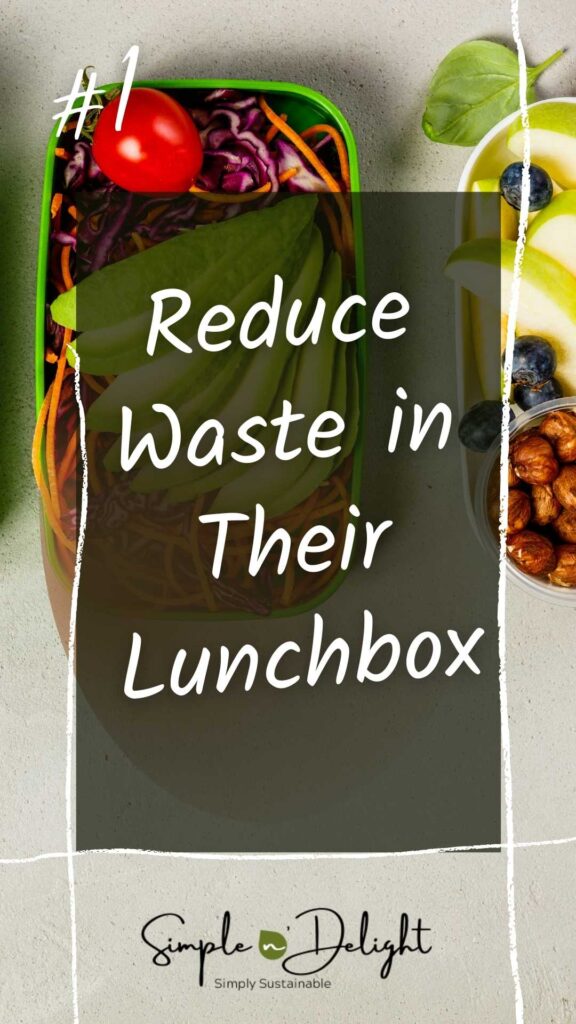
Let’s start with LUNCH! Since the pandemic, all children have had to bring their own lunches to school. We look for ways that we can reduce waste in their lunchboxes and talk about some of the alternatives that make better snacks and meals.
Without centering anyone out, we look at heavy plastic & wasteful lunch options like Lunchables, Kool-Aid Jammers, chip bags, and foil wrapper snacks. We talk about the limits of recycling, and how contaminated recycling will end up in landfills. We look at better alternatives to these types of lunches, and how zero-waste substitutes can actually SAVE money in the end, using less packaging and more refillable containers.
Most of the time, impediments to zero-waste lunches have to do with education and time. Since parents are often squeezed for time, pre-made snacks are usually bought as a time-saving solution, and so teaching about properly disposing of their wrappers is part of an equitable solution.
Kids find these lunch box lessons empowering because they end up advocating and teaching their parents about lower-waste alternatives. They make the connection that lowering waste reduces their carbon footprint by needing to produce less packaging with non-renewable fossil fuels and contributing less to landfills.
2. Waste Audit
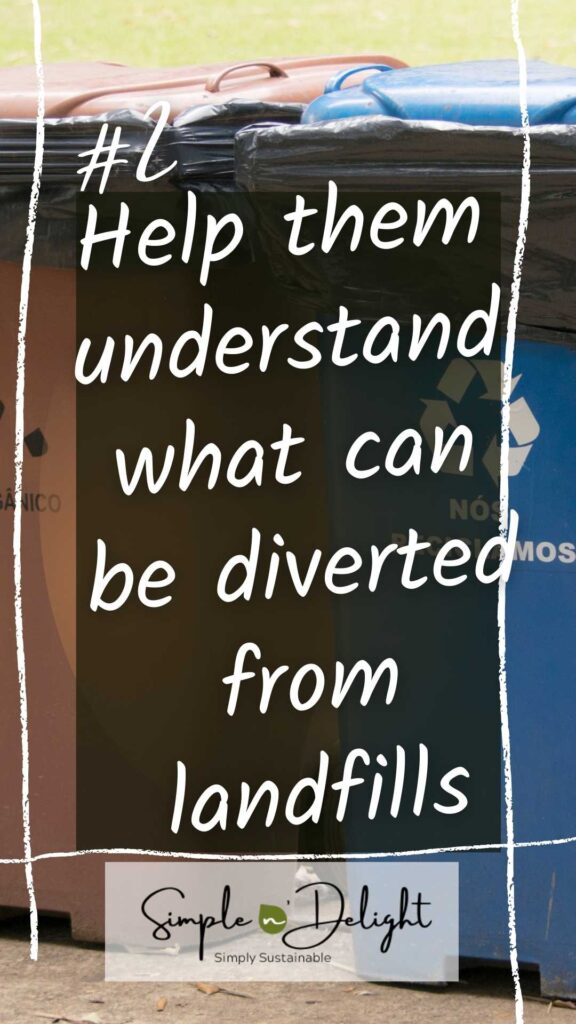
Twice a year we try to do a waste audit in the school. A waste audit starts by first setting a goal to reduce the waste that goes to landfills.
A waste audit can be done in one of two ways. The first way is to bag all garbage per class and weight and sort the garbage based into a few containers: a container for recycling, a container for composting, and a container for landfill. We then look at how much waste measured in lbs COULD have been diverted. This number acts as a rough goal to achieve throughout the year. Throughout the year we refine our waste practices and redo the waste audit at the end of the year. We remeasure with another waste audit to make sure that we have reduced the waste that we intended to.
The simpler way to do an audit, especially now that we are faced with potentially COVID contaminated waste, is to simply weigh each classrooms’ garbage, record that number publicly within the school, and then repeat it at the end of the year to see who has reduced the most waste by utilizing recycling, compost, and bringing reusable containers to school.
This practice gives the students goals to work towards and also gives them a good picture of where they can improve. Friendly competition within the school motivates the students to be better and strive towards lowering their individual waste output. Lower waste equals less carbon into the environment.
For more information about beginning a Zero-Waste Life, read:
What is Zero Waste? Simple Strategies to Start
3. Water Bottles

Talking about drinking water is important. In recent years I see this practice becoming more and more ingrained. Talking about how they can reduce their plastic consumption with a simple water bottle is a great lesson. Showing them pictures of mounds of plastic water bottles is a great motivation. Talking about how recycling is a good option, BUT not the best option since it requires energy output and the need to dig up more fossil fuels for new water bottles.
Kids are in the habit of drinking water throughout the day. This is not only great practice for the earth but also helps their health tremendously, as they would previously be drinking many sugary drinks–hindering their nutrition and concentration.
A surprising fact that the students learn throughout this process is that food-grade plastic cannot be sought from recycled matter. So, that bottle of Dasani CAN be recycled, but cannot COME from recycled sources. Bringing their own water reduces their carbon footprint by not having to produce more plastic for bottles.
4. Energy Consumption
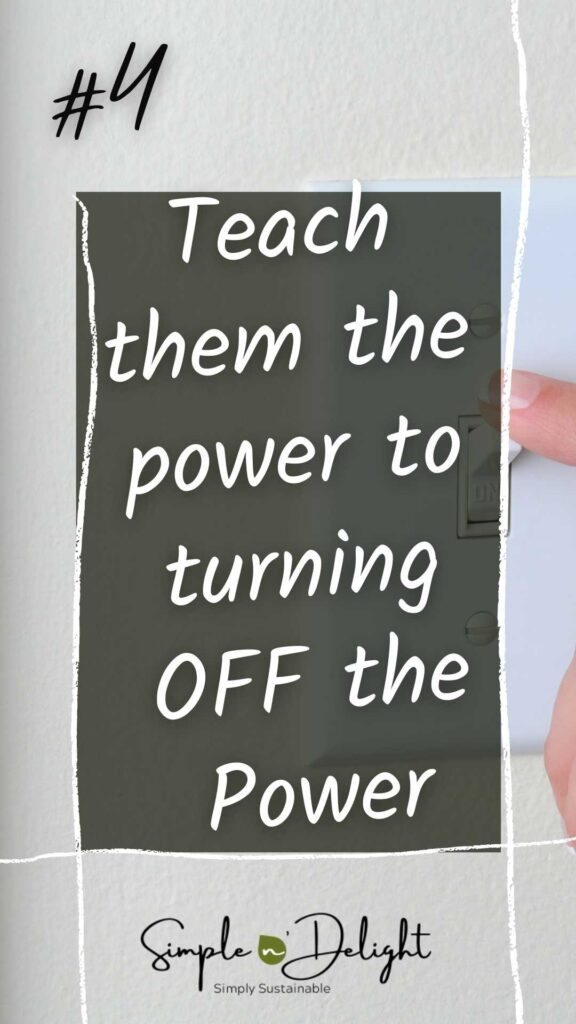
As with the Waste Audit, we also perform an energy audit twice a year. We take a look at lights, radios, and electronics during non-class-time and when not in use, and we take a look at blinds up or down depending on the time of day. This is also another goal that we work towards together as a school.
Children are taught to keep the lights and computers off when not in use. They are taught how the heat of the sun can help heat the rooms (since we are in Canada), and so blinds should be up during the day and down at night. This would be the opposite if you’re in a warm climate, where blinds should be down during the day and up during the night.
Talking about how they can transfer these energy-saving skills to their own apartments and homes is an important part of the lesson.
5. Transportation
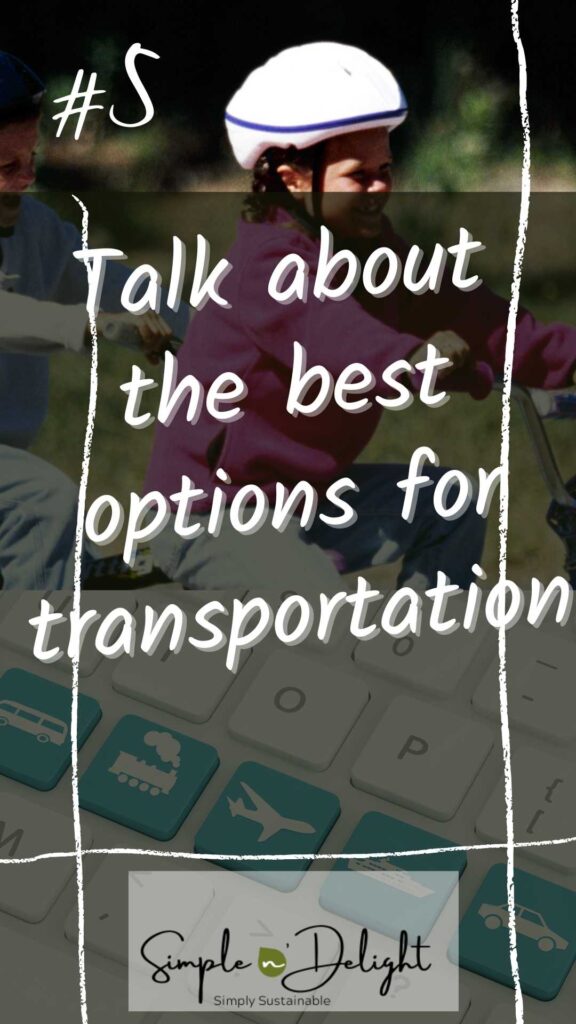
We talk about transportation to and from school and better options they can take to taking the car. While this is mostly out of their control due to the choices their parents make. They gain insight into how taking a car may be the worst option for the planet, while busing, biking, and walking are greener options. Green options can also include electronic vehicles (EVs); and even though the students’ families may not have the extra funds for the green premium of an EV, they can still advocate by writing to governments asking for support to put more EVs on the road.
At this stage, it is all about education, and the more the students learn about options for their future, the better we stand a chance at reducing our carbon footprint.
6. Recycling
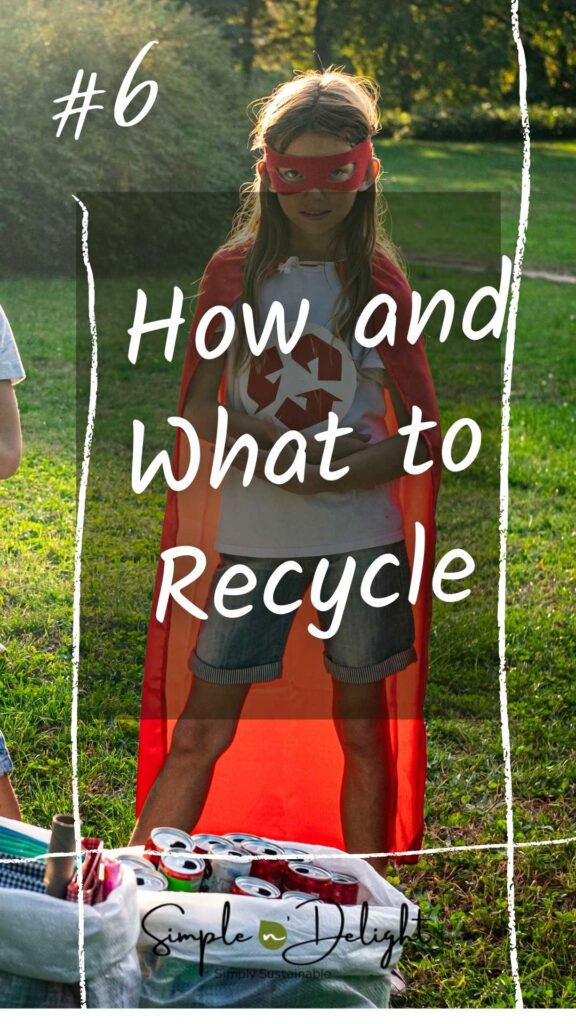
Many of my students in the inner city live in apartment buildings and recycling may not be an easy option that families participate in. As a result, teaching the proper recycling techniques is something that I must do repetitively throughout the year. Many days I will take the recycling bin to the front of the class after lunch and go through it with plastic gloves showing students what cannot be discarded into the recycling bin.
Most of the offending items that end up in the recycling bin are half-full juice boxes, yogurt containers that haven’t been rinsed out, milk boxes that haven’t been rinsed out, chip bags, foil wrappers, and dirty plastic baggies. While the items that can be recycled from district to district may vary, it is important to find out about what is recyclable in your community and what is not.
Mistakenly putting something in the recycling bin runs the risk of contaminating the whole bin and having it end up in the landfill. Wet paper cannot be recycled and will go to landfills. Students learn this lesson throughout the year.
For more information on how to reduce your plastic at home read:
How to Reduce Your Plastic at Home – 4 Rooms Revealed!
7. Re-use
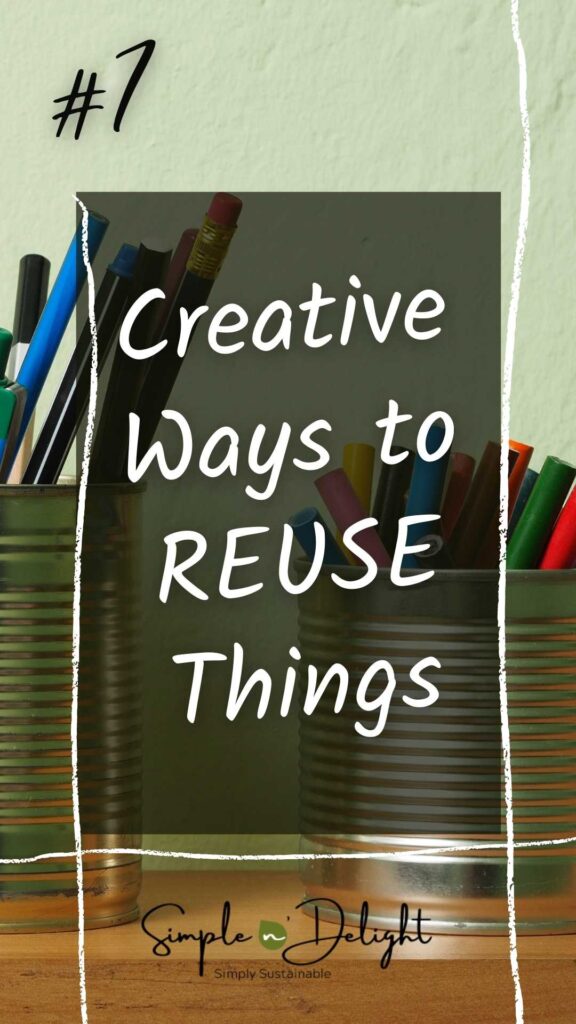
In my class, we look at all of the ways that we can re-use all things. We have a bin for scrap paper, we re-use milk boxes and egg cartons for art, we use cardboard boxes for bags and jackets, and we use old clothing for rags in the class.
Kids are taught the benefits of reusing as much as possible. We have a clothing drive once a year and teach them about how throwing things out will add to their carbon footprint by having to use more resources to produce more new items, and by contributing more to landfills.
8. Gardening and Planting

I think I’m the luckiest teacher in the school since I have a beautiful classroom right next to our courtyard. We use the outdoor courtyard to grow plants and flowers which attract bees and pollinators. We talk about the benefits of growing your own food and how eating from your own garden can reduce your carbon footprint by limiting distribution costs and energy outputs.
Gardening and planting help kids connect to the natural world and allow them to make a better connection to the earth and their reasons for wanting to reduce their carbon footprint. We talk about farmers, farming, and how plants, and trees help increase the oxygen, reduce the carbon in our air and help the planet stay cool.
9. Conserve and Protect Our Water
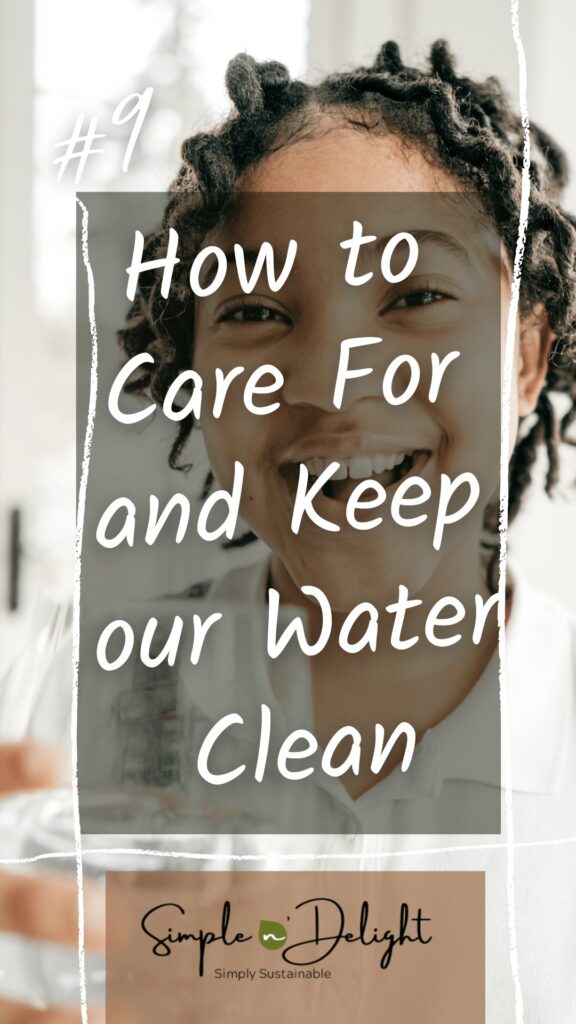
This is an ongoing lesson….to say the least! If I had a nickel for every time I remind the students to turn off the tap, I’d be rich! Lol. Joking aside, I think they just forget to turn off the tap. We talk about how precious clean water is and how lucky we are in North America to have clean water at our disposal at all times.
We talk about the necessity to limit microplastics in our waters and sources that contribute to such pollution. For more information on reducing microplastics in our environment read:
11 Rules for Addressing the Modern Microplastic Mess
The kids end up going home to remind their parents to turn off the tap and do the washing on cold.
10. Become One with Nature
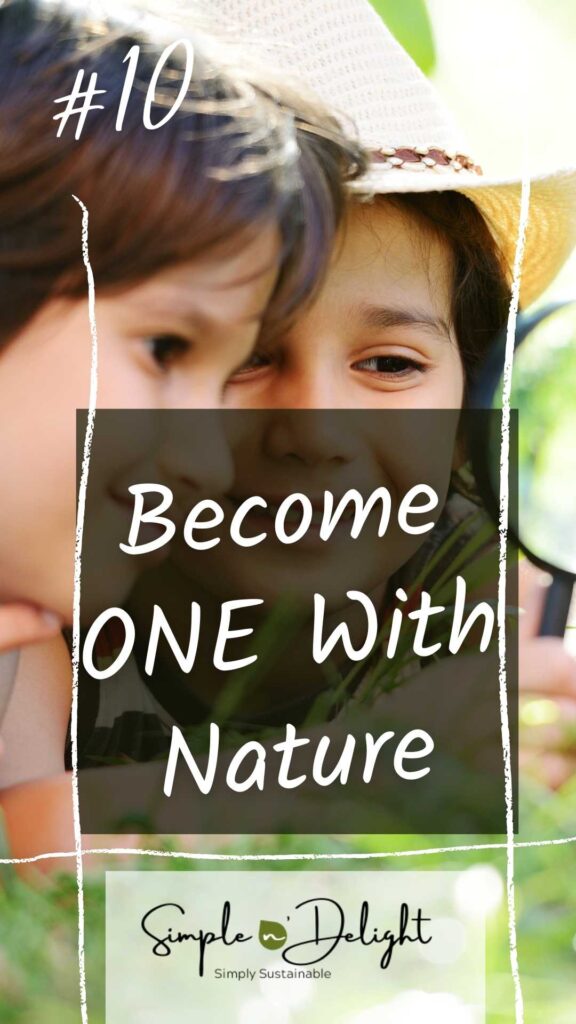
In my class, I try to link nature and the outdoors to many different subjects. I want students to feel a connection with the earth from a young age. We do art with nature, we study the seasons and how they affect us as humans, and in math, we study the patterns found in nature.
Having a connection with the natural world allows students to want to become more involved and demonstrates how their actions make a difference. Teaching in nature also leads to a higher degree of self-regulation and when kids feel more in control, they make better decisions for themselves and the earth.
11. Disseminating the Message to Others and Campaigns
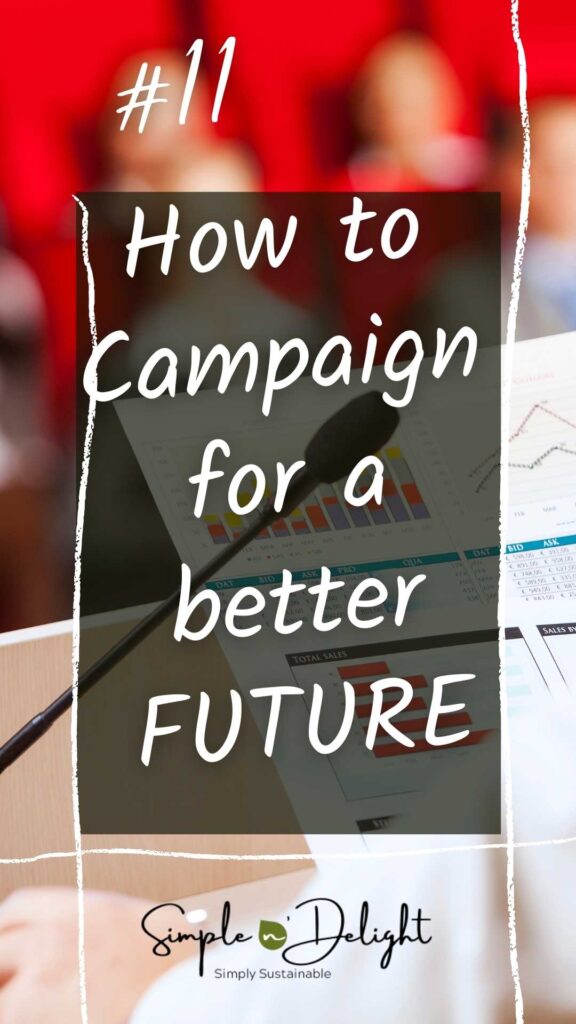
Throughout the year, and after our audits, the eco-team focuses on disseminating the message to the rest of the school and to the community. The kids put on dramatic play skits, make art posters to remind students of ways to reduce their carbon footprint, and put together educational presentations for others in the school.
Kids love this part of the program because it is when they get to share all of the knowledge that they have acquired.
At times, when there is an environmental issue that we want to focus on, we write letters to our local politicians and run campaigns and announcements within the school. This gives them the idea that issues ARE within their control, and that it takes education and knowledge to make the world a better place.
I’d be happy to partner with businesses who can have an impact, in particular schools, home care agencies, and camps because they can easily implement some of what we teach.

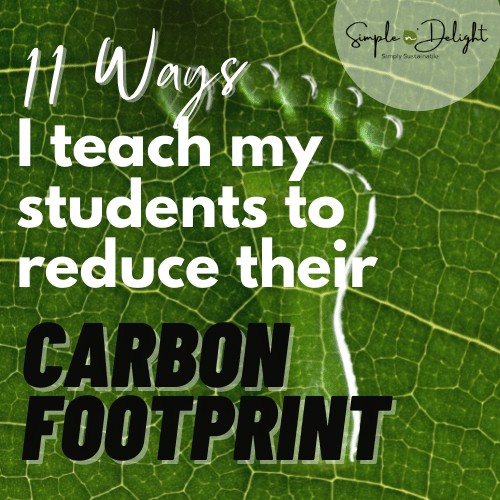






8 Responses
Fantastic post! We truly all need to be proactive about saving our planet.
This is such a great and thorough post! We definitely try to reduce our plastic consumption, but being out and about can make that so hard.
What a beautiful post! It’s so important to teach kids about recycling, reusing and save resources. I loved the practice of repurposing materials for crafts and planting flowers for bees to pollinate. Maybe some of the kids’ parents are not into sustainability and they may teach a thing or two to them. We need to take better care of our planet urgently.
I’m glad that you are planting the seed of caring for the environment in children. Keep the good work. Thanks!
Thank you Widalys. I would love to see your website, what is the address?
I teach high school biology and will be using these ideas with my older kids! Great list of examples that kids will understand.
These are great! Good tips for adults too.
These are all great tips! I teach high school and I have a lot of students interested in reducing their carbon footprint. They are always encouraging me to use a reusable water bottle.